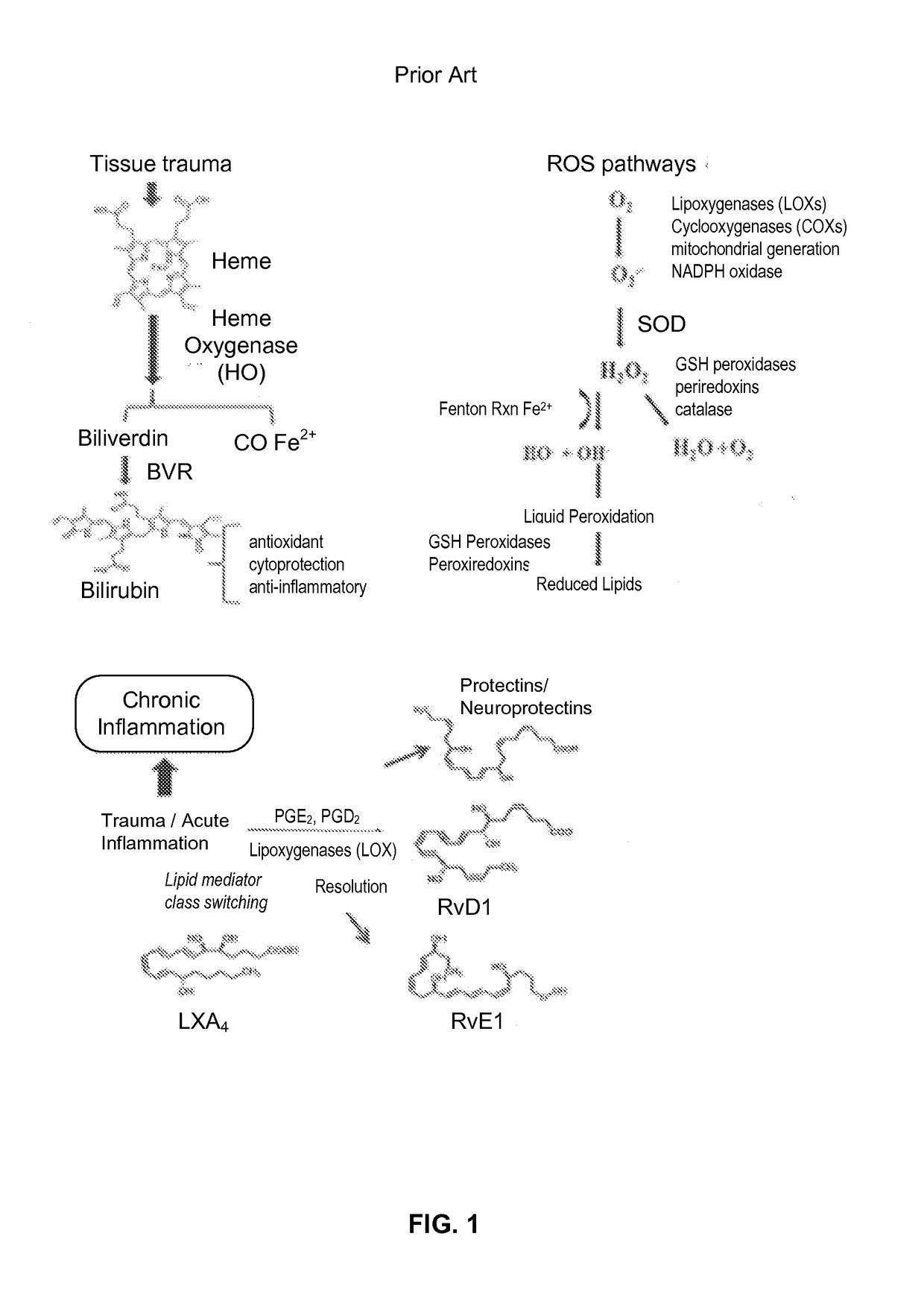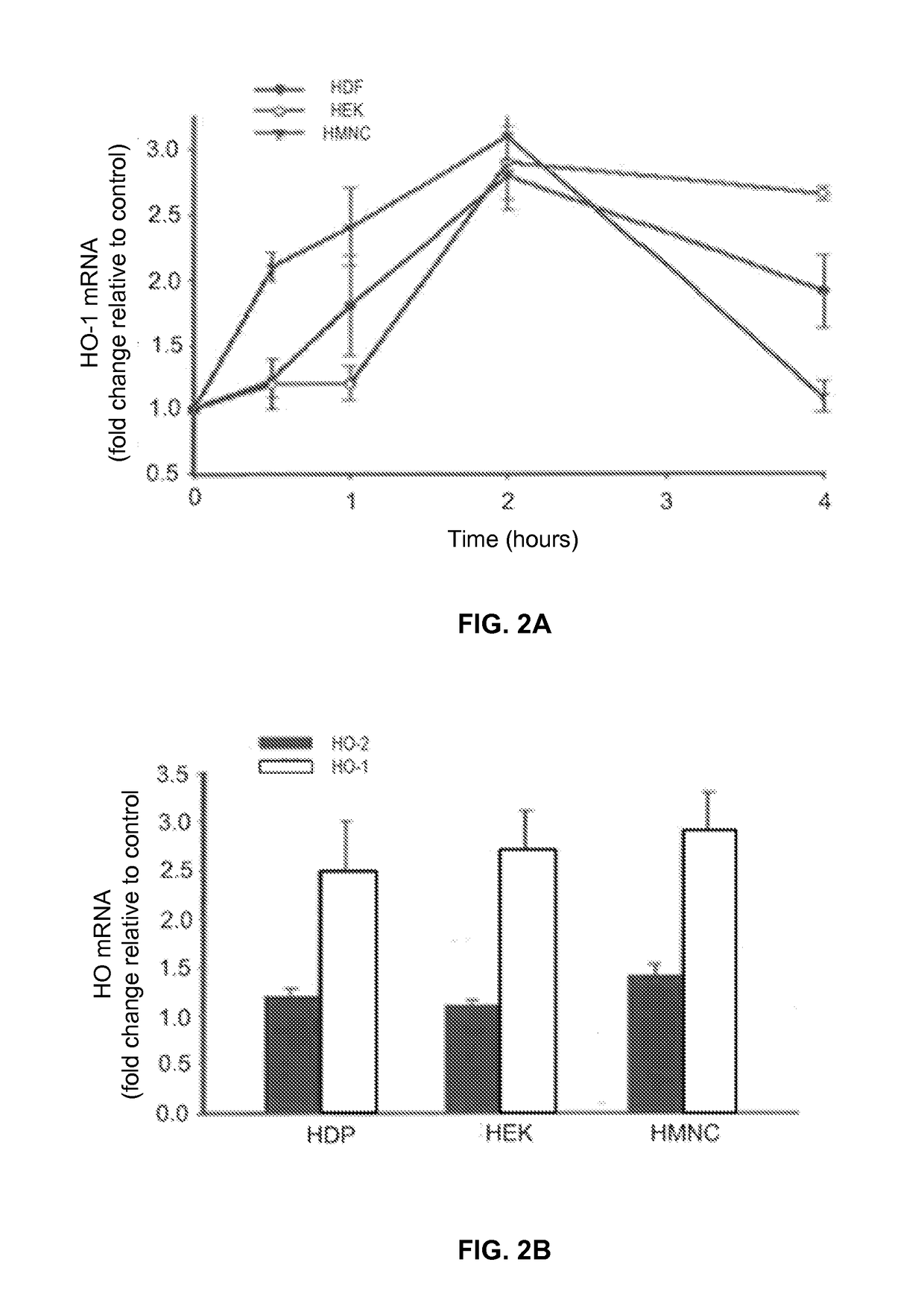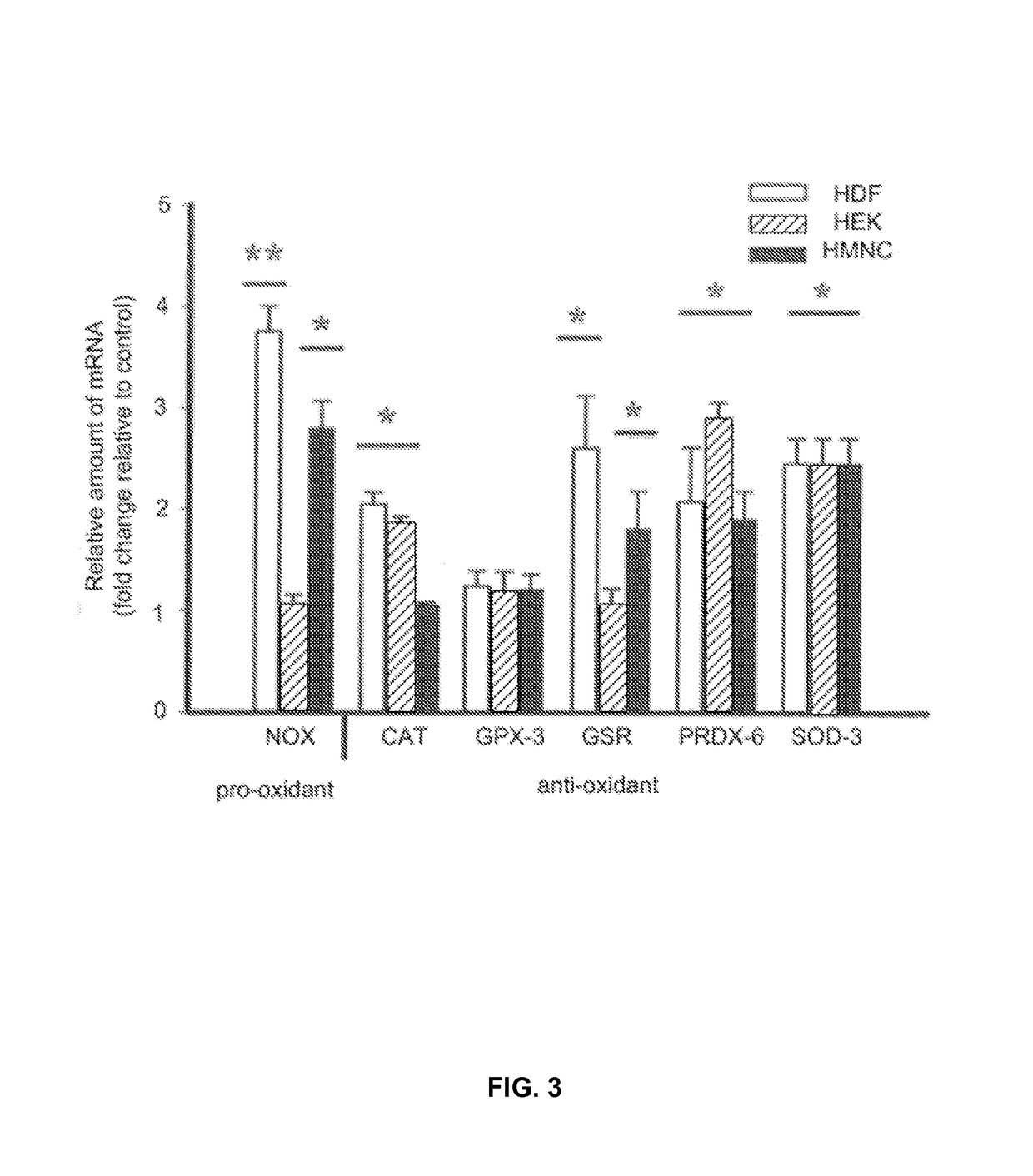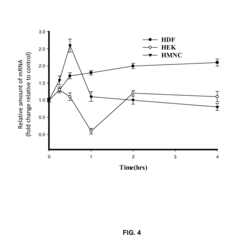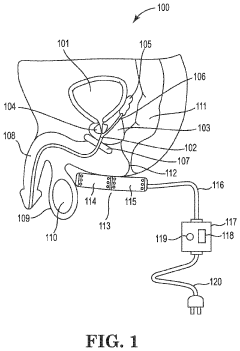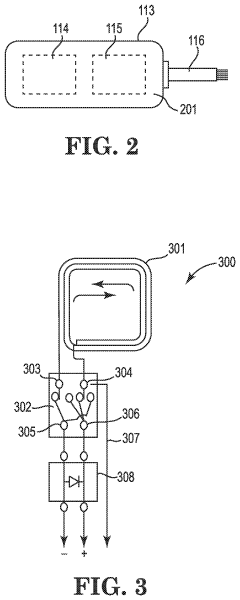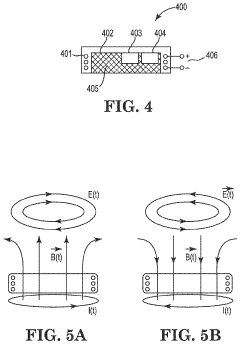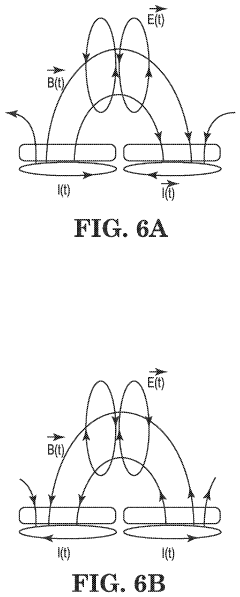Investigating PEMF Therapy for Treatment-Resistant Conditions
AUG 11, 20259 MIN READ
Generate Your Research Report Instantly with AI Agent
Patsnap Eureka helps you evaluate technical feasibility & market potential.
PEMF Therapy Background
Pulsed Electromagnetic Field (PEMF) therapy is a non-invasive treatment modality that has gained significant attention in recent years for its potential to address various health conditions. The therapy utilizes electromagnetic fields to stimulate cellular repair and regeneration, offering a promising approach for managing treatment-resistant conditions.
The concept of using electromagnetic fields for therapeutic purposes dates back to the mid-20th century when scientists first observed the effects of pulsed magnetic fields on bone healing. Since then, research has expanded to explore the potential benefits of PEMF therapy across a wide range of medical applications, including pain management, tissue repair, and neurological disorders.
PEMF therapy works by delivering pulsed electromagnetic fields to targeted areas of the body. These fields interact with the body's cells, particularly at the cellular membrane level, influencing various physiological processes. The therapy is believed to enhance cellular energy production, improve circulation, reduce inflammation, and promote the body's natural healing mechanisms.
Over the years, PEMF devices have evolved from large, stationary machines used primarily in clinical settings to more compact, portable units suitable for home use. This evolution has made the therapy more accessible to a broader range of patients, contributing to its growing popularity as a complementary treatment option.
The application of PEMF therapy in treatment-resistant conditions has garnered particular interest among researchers and clinicians. These conditions, which often prove challenging to manage with conventional treatments, include chronic pain syndromes, non-union fractures, and certain neurological disorders. The potential of PEMF therapy to offer relief in cases where traditional approaches have failed has led to increased investigation into its efficacy and mechanisms of action.
As research in this field progresses, scientists are exploring the optimal parameters for PEMF therapy, including frequency, intensity, and duration of treatment. These studies aim to establish standardized protocols for different conditions and to better understand the long-term effects of PEMF exposure.
The growing body of evidence supporting PEMF therapy has led to its recognition by regulatory bodies in various countries. For instance, the U.S. Food and Drug Administration (FDA) has approved certain PEMF devices for specific indications, such as bone healing and pain relief. This regulatory acceptance has further legitimized PEMF therapy as a viable treatment option and has encouraged more extensive clinical trials to explore its full potential.
The concept of using electromagnetic fields for therapeutic purposes dates back to the mid-20th century when scientists first observed the effects of pulsed magnetic fields on bone healing. Since then, research has expanded to explore the potential benefits of PEMF therapy across a wide range of medical applications, including pain management, tissue repair, and neurological disorders.
PEMF therapy works by delivering pulsed electromagnetic fields to targeted areas of the body. These fields interact with the body's cells, particularly at the cellular membrane level, influencing various physiological processes. The therapy is believed to enhance cellular energy production, improve circulation, reduce inflammation, and promote the body's natural healing mechanisms.
Over the years, PEMF devices have evolved from large, stationary machines used primarily in clinical settings to more compact, portable units suitable for home use. This evolution has made the therapy more accessible to a broader range of patients, contributing to its growing popularity as a complementary treatment option.
The application of PEMF therapy in treatment-resistant conditions has garnered particular interest among researchers and clinicians. These conditions, which often prove challenging to manage with conventional treatments, include chronic pain syndromes, non-union fractures, and certain neurological disorders. The potential of PEMF therapy to offer relief in cases where traditional approaches have failed has led to increased investigation into its efficacy and mechanisms of action.
As research in this field progresses, scientists are exploring the optimal parameters for PEMF therapy, including frequency, intensity, and duration of treatment. These studies aim to establish standardized protocols for different conditions and to better understand the long-term effects of PEMF exposure.
The growing body of evidence supporting PEMF therapy has led to its recognition by regulatory bodies in various countries. For instance, the U.S. Food and Drug Administration (FDA) has approved certain PEMF devices for specific indications, such as bone healing and pain relief. This regulatory acceptance has further legitimized PEMF therapy as a viable treatment option and has encouraged more extensive clinical trials to explore its full potential.
Market Analysis
The market for PEMF (Pulsed Electromagnetic Field) therapy in treating resistant conditions is experiencing significant growth, driven by increasing awareness of its potential benefits and the rising prevalence of chronic diseases. As conventional treatments often fail to provide adequate relief for certain conditions, patients and healthcare providers are increasingly turning to alternative therapies like PEMF.
The global PEMF therapy market is expected to expand substantially in the coming years, with a compound annual growth rate (CAGR) projected to be in the double digits. This growth is attributed to factors such as the aging population, the rise in sports-related injuries, and the growing acceptance of non-invasive treatment options.
One of the key market segments for PEMF therapy is in the treatment of musculoskeletal disorders, including osteoarthritis, rheumatoid arthritis, and chronic pain conditions. These conditions often prove resistant to traditional treatments, creating a significant unmet medical need that PEMF therapy aims to address.
Another promising area for PEMF therapy is in the treatment of neurological disorders, such as depression, anxiety, and neurodegenerative diseases. As these conditions can be particularly challenging to treat with conventional methods, the potential of PEMF therapy to offer relief has garnered considerable interest from both patients and healthcare professionals.
The market for PEMF devices is diverse, ranging from portable, home-use devices to more sophisticated clinical systems. This variety caters to different consumer needs and preferences, from individuals seeking self-administered treatments to healthcare facilities offering professional PEMF therapy services.
Geographically, North America currently holds the largest share of the PEMF therapy market, followed by Europe. This dominance is attributed to higher healthcare expenditure, greater awareness of alternative therapies, and a more established regulatory framework for medical devices. However, the Asia-Pacific region is expected to witness the fastest growth in the coming years, driven by increasing healthcare investments and a growing middle-class population seeking advanced medical treatments.
Despite the promising outlook, the PEMF therapy market faces several challenges. These include the need for more extensive clinical research to validate its efficacy in treating resistant conditions, regulatory hurdles in some regions, and the relatively high cost of advanced PEMF devices. Overcoming these obstacles will be crucial for the continued expansion of the market and wider adoption of PEMF therapy in mainstream healthcare.
As research in this field progresses and more evidence accumulates supporting the efficacy of PEMF therapy for treatment-resistant conditions, it is likely that we will see increased integration of this technology into standard care protocols. This trend could potentially reshape treatment paradigms for a range of chronic and difficult-to-treat conditions, offering new hope to patients who have exhausted conventional treatment options.
The global PEMF therapy market is expected to expand substantially in the coming years, with a compound annual growth rate (CAGR) projected to be in the double digits. This growth is attributed to factors such as the aging population, the rise in sports-related injuries, and the growing acceptance of non-invasive treatment options.
One of the key market segments for PEMF therapy is in the treatment of musculoskeletal disorders, including osteoarthritis, rheumatoid arthritis, and chronic pain conditions. These conditions often prove resistant to traditional treatments, creating a significant unmet medical need that PEMF therapy aims to address.
Another promising area for PEMF therapy is in the treatment of neurological disorders, such as depression, anxiety, and neurodegenerative diseases. As these conditions can be particularly challenging to treat with conventional methods, the potential of PEMF therapy to offer relief has garnered considerable interest from both patients and healthcare professionals.
The market for PEMF devices is diverse, ranging from portable, home-use devices to more sophisticated clinical systems. This variety caters to different consumer needs and preferences, from individuals seeking self-administered treatments to healthcare facilities offering professional PEMF therapy services.
Geographically, North America currently holds the largest share of the PEMF therapy market, followed by Europe. This dominance is attributed to higher healthcare expenditure, greater awareness of alternative therapies, and a more established regulatory framework for medical devices. However, the Asia-Pacific region is expected to witness the fastest growth in the coming years, driven by increasing healthcare investments and a growing middle-class population seeking advanced medical treatments.
Despite the promising outlook, the PEMF therapy market faces several challenges. These include the need for more extensive clinical research to validate its efficacy in treating resistant conditions, regulatory hurdles in some regions, and the relatively high cost of advanced PEMF devices. Overcoming these obstacles will be crucial for the continued expansion of the market and wider adoption of PEMF therapy in mainstream healthcare.
As research in this field progresses and more evidence accumulates supporting the efficacy of PEMF therapy for treatment-resistant conditions, it is likely that we will see increased integration of this technology into standard care protocols. This trend could potentially reshape treatment paradigms for a range of chronic and difficult-to-treat conditions, offering new hope to patients who have exhausted conventional treatment options.
Technical Challenges
PEMF (Pulsed Electromagnetic Field) therapy faces several technical challenges in its application for treatment-resistant conditions. One of the primary obstacles is the lack of standardization in treatment protocols. Different devices and practitioners employ varying frequencies, intensities, and durations of electromagnetic pulses, making it difficult to establish consistent and reproducible results across studies and clinical applications.
Another significant challenge lies in the precise targeting of specific tissues or organs. While PEMF therapy can penetrate deep into the body, controlling the exact depth and area of effect remains problematic. This limitation can lead to reduced efficacy in treating localized conditions and potential unwanted effects on surrounding tissues.
The development of compact, portable PEMF devices for home use presents additional technical hurdles. Balancing power requirements, battery life, and effective field strength in a user-friendly format is an ongoing challenge for manufacturers. Moreover, ensuring these devices maintain consistent output over time and under various environmental conditions is crucial for reliable treatment outcomes.
Electromagnetic interference with other medical devices and implants poses a serious concern. PEMF therapy must be carefully calibrated to avoid disrupting the function of pacemakers, insulin pumps, or other electronic medical equipment. This necessitates the development of sophisticated shielding and compatibility protocols.
The biological mechanisms underlying PEMF therapy's effects are not fully understood, complicating the optimization of treatment parameters. While some studies suggest that PEMF influences cellular ion channels and membrane potentials, the exact pathways and long-term effects remain unclear. This knowledge gap hinders the development of more targeted and effective PEMF treatments for specific conditions.
Dosimetry and treatment planning present additional technical challenges. Determining the optimal dose of electromagnetic energy for different conditions and individual patients is complex, as factors such as tissue composition, body mass, and the specific nature of the treatment-resistant condition all influence the therapy's effectiveness. Creating accurate models and measurement techniques for in vivo electromagnetic field distribution is an ongoing area of research.
Finally, the development of combination therapies that integrate PEMF with other treatment modalities presents both opportunities and challenges. Synergizing PEMF with pharmacological treatments or other physical therapies requires careful consideration of potential interactions and timing. Designing studies to isolate and quantify the specific contributions of PEMF in such combination approaches adds another layer of complexity to the research and development process.
Another significant challenge lies in the precise targeting of specific tissues or organs. While PEMF therapy can penetrate deep into the body, controlling the exact depth and area of effect remains problematic. This limitation can lead to reduced efficacy in treating localized conditions and potential unwanted effects on surrounding tissues.
The development of compact, portable PEMF devices for home use presents additional technical hurdles. Balancing power requirements, battery life, and effective field strength in a user-friendly format is an ongoing challenge for manufacturers. Moreover, ensuring these devices maintain consistent output over time and under various environmental conditions is crucial for reliable treatment outcomes.
Electromagnetic interference with other medical devices and implants poses a serious concern. PEMF therapy must be carefully calibrated to avoid disrupting the function of pacemakers, insulin pumps, or other electronic medical equipment. This necessitates the development of sophisticated shielding and compatibility protocols.
The biological mechanisms underlying PEMF therapy's effects are not fully understood, complicating the optimization of treatment parameters. While some studies suggest that PEMF influences cellular ion channels and membrane potentials, the exact pathways and long-term effects remain unclear. This knowledge gap hinders the development of more targeted and effective PEMF treatments for specific conditions.
Dosimetry and treatment planning present additional technical challenges. Determining the optimal dose of electromagnetic energy for different conditions and individual patients is complex, as factors such as tissue composition, body mass, and the specific nature of the treatment-resistant condition all influence the therapy's effectiveness. Creating accurate models and measurement techniques for in vivo electromagnetic field distribution is an ongoing area of research.
Finally, the development of combination therapies that integrate PEMF with other treatment modalities presents both opportunities and challenges. Synergizing PEMF with pharmacological treatments or other physical therapies requires careful consideration of potential interactions and timing. Designing studies to isolate and quantify the specific contributions of PEMF in such combination approaches adds another layer of complexity to the research and development process.
Current PEMF Solutions
01 PEMF devices for therapeutic applications
Pulsed Electromagnetic Field (PEMF) therapy devices are designed for various therapeutic applications. These devices generate electromagnetic fields to stimulate cellular activity and promote healing. They can be used for pain management, tissue repair, and improving overall well-being.- PEMF devices for therapeutic applications: Pulsed Electromagnetic Field (PEMF) therapy devices are designed for various therapeutic applications. These devices generate electromagnetic fields to stimulate cellular activity and promote healing. They can be used for pain management, tissue repair, and improving overall well-being.
- PEMF therapy for specific medical conditions: PEMF therapy is utilized to treat specific medical conditions. It has shown efficacy in addressing issues such as musculoskeletal disorders, neurological conditions, and wound healing. The therapy can be tailored to target particular areas of the body or specific health concerns.
- Advancements in PEMF technology: Recent advancements in PEMF technology have led to more sophisticated and efficient devices. These improvements include better control over field intensity and frequency, enhanced portability, and integration with other therapeutic modalities. New designs aim to optimize treatment effectiveness and user convenience.
- PEMF therapy in veterinary and agricultural applications: PEMF therapy has expanded beyond human applications to include veterinary medicine and agriculture. It is used to treat animals for various conditions and to enhance plant growth and crop yield. These applications demonstrate the versatility of PEMF technology in promoting biological processes across different species.
- Combination of PEMF with other therapies: PEMF therapy is often combined with other treatment modalities to enhance overall therapeutic outcomes. This includes integration with physical therapy, light therapy, and other forms of electromagnetic stimulation. The synergistic effects of these combinations can potentially lead to improved treatment efficacy for various conditions.
02 PEMF therapy for specific medical conditions
PEMF therapy is utilized to treat specific medical conditions. It has shown efficacy in addressing issues such as musculoskeletal disorders, neurological conditions, and wound healing. The therapy can be tailored to target particular areas of the body or specific health concerns.Expand Specific Solutions03 Advancements in PEMF technology
Recent advancements in PEMF technology have led to more sophisticated and efficient devices. These improvements include better control over field intensity and frequency, enhanced portability, and integration with other therapeutic modalities. New designs aim to optimize treatment effectiveness and user convenience.Expand Specific Solutions04 PEMF therapy in veterinary and agricultural applications
PEMF therapy has expanded beyond human applications to include veterinary medicine and agriculture. It is used to treat animals for various conditions and to enhance plant growth and crop yield. These applications demonstrate the versatility of PEMF technology in promoting biological processes across different species.Expand Specific Solutions05 Combination of PEMF with other therapies
PEMF therapy is often combined with other treatment modalities to enhance overall therapeutic outcomes. This includes integration with physical therapy, light therapy, and other forms of electromagnetic stimulation. The synergistic effects of these combinations can lead to improved treatment efficacy for various health conditions.Expand Specific Solutions
Key Industry Players
The PEMF therapy market for treatment-resistant conditions is in an early growth stage, with increasing research interest and emerging clinical applications. The global market size is estimated to reach several hundred million dollars by 2025, driven by rising prevalence of chronic diseases and demand for non-invasive treatments. While the technology shows promise, it is still evolving in terms of efficacy and standardization. Key players like Novartis, SofPulse, and Venus Concept are investing in R&D to enhance PEMF devices and expand therapeutic applications. Academic institutions such as Johns Hopkins University and University of Basel are conducting foundational research to elucidate mechanisms of action and optimize treatment protocols. As the field advances, collaborations between industry and academia will be crucial for clinical validation and commercialization of PEMF therapies for treatment-resistant conditions.
SofPulse, Inc.
Technical Solution: SofPulse, Inc. has developed a proprietary PEMF therapy device specifically designed for treatment-resistant conditions. Their technology utilizes targeted electromagnetic pulses to stimulate cellular repair and reduce inflammation. The SofPulse device delivers low-frequency, low-intensity electromagnetic fields that penetrate deep into tissues, promoting healing at the cellular level[1]. The company's approach focuses on optimizing pulse parameters and treatment protocols for maximum efficacy in conditions that have not responded well to conventional therapies[2]. SofPulse's PEMF technology has shown promising results in reducing pain and accelerating recovery in various treatment-resistant musculoskeletal disorders and chronic wound healing[3].
Strengths: Specialized PEMF technology for treatment-resistant conditions, non-invasive approach, and demonstrated efficacy in multiple applications. Weaknesses: Limited to specific frequency ranges, potential for variability in individual patient responses.
Venus Concept Ltd.
Technical Solution: Venus Concept Ltd. has pioneered advanced PEMF therapy solutions for treatment-resistant conditions, particularly in the aesthetic and medical fields. Their flagship device, Venus Pulse, incorporates patented RP3 technology that combines PEMF with other modalities such as radiofrequency and magnetic pulse therapy[4]. This multi-modal approach aims to enhance cellular regeneration, improve blood circulation, and reduce inflammation in treatment-resistant skin conditions and musculoskeletal disorders. Venus Concept's PEMF technology utilizes precisely calibrated electromagnetic pulses to penetrate deep into tissues, stimulating cellular metabolism and promoting healing at the molecular level[5]. The company has conducted extensive clinical research to optimize pulse parameters for various treatment-resistant conditions, demonstrating significant improvements in patient outcomes[6].
Strengths: Innovative combination of PEMF with other therapies, extensive clinical validation, and versatility in addressing multiple treatment-resistant conditions. Weaknesses: Higher cost due to advanced technology integration, potential learning curve for practitioners.
PEMF Research Innovations
Treatment of conditions susceptible to pulsed electromagnetic field therapy
PatentActiveUS20170354830A1
Innovation
- PEMF therapy is administered to modulate gene expression associated with inflammation pathways, including heme oxygenase, antioxidant enzymes, lipid mediator biosynthesis, and cytokines, using specific parameters such as electric field strength, pulse rate, and duration to produce measurable clinical effects on pain, nerve function, and wound healing.
Method and apparatus for treatment of benign prostatic hyperplasia (BPH)
PatentInactiveUS20230398368A1
Innovation
- A non-invasive method utilizing pulsed electromagnetic field (PEMF) stimulation to increase the number of A2a receptors on cell membranes, enhancing the anti-inflammatory effects of adenosine and providing immunosuppressive action to reduce chronic inflammation and tissue damage in the prostate.
Regulatory Framework
The regulatory framework surrounding Pulsed Electromagnetic Field (PEMF) therapy for treatment-resistant conditions is complex and evolving. In the United States, the Food and Drug Administration (FDA) has classified PEMF devices into different categories based on their intended use and potential risks.
For musculoskeletal conditions, several PEMF devices have received FDA clearance through the 510(k) premarket notification process. These devices are considered Class II medical devices, which require demonstration of substantial equivalence to a predicate device already on the market. However, for treatment-resistant conditions beyond musculoskeletal applications, the regulatory path is less clear.
The FDA has not yet established specific guidelines for PEMF therapy in treating conditions such as depression, anxiety, or chronic pain that have not responded to conventional treatments. This regulatory gap presents both challenges and opportunities for researchers and manufacturers exploring PEMF applications in these areas.
In the European Union, PEMF devices are regulated under the Medical Device Regulation (MDR). The classification of these devices depends on their intended use and the claims made by the manufacturer. Generally, PEMF devices fall under Class IIa or IIb, requiring a conformity assessment procedure involving a notified body.
Internationally, regulatory approaches to PEMF therapy vary significantly. Some countries have adopted frameworks similar to those in the US or EU, while others have less stringent regulations or no specific guidelines for PEMF devices.
As research into PEMF therapy for treatment-resistant conditions progresses, regulatory bodies are likely to develop more specific guidelines. This may include requirements for clinical trials demonstrating safety and efficacy in specific treatment-resistant populations. Manufacturers and researchers must stay informed about evolving regulatory expectations to ensure compliance and facilitate market access.
The lack of standardized protocols for PEMF therapy in treatment-resistant conditions presents a challenge for regulators. Establishing consensus on treatment parameters, such as frequency, intensity, and duration, will be crucial for developing consistent regulatory frameworks across different jurisdictions.
Given the potential of PEMF therapy to address unmet medical needs in treatment-resistant conditions, regulatory agencies may consider expedited review processes or adaptive licensing approaches. These could allow for earlier access to promising PEMF therapies while continuing to gather real-world evidence on their long-term safety and effectiveness.
For musculoskeletal conditions, several PEMF devices have received FDA clearance through the 510(k) premarket notification process. These devices are considered Class II medical devices, which require demonstration of substantial equivalence to a predicate device already on the market. However, for treatment-resistant conditions beyond musculoskeletal applications, the regulatory path is less clear.
The FDA has not yet established specific guidelines for PEMF therapy in treating conditions such as depression, anxiety, or chronic pain that have not responded to conventional treatments. This regulatory gap presents both challenges and opportunities for researchers and manufacturers exploring PEMF applications in these areas.
In the European Union, PEMF devices are regulated under the Medical Device Regulation (MDR). The classification of these devices depends on their intended use and the claims made by the manufacturer. Generally, PEMF devices fall under Class IIa or IIb, requiring a conformity assessment procedure involving a notified body.
Internationally, regulatory approaches to PEMF therapy vary significantly. Some countries have adopted frameworks similar to those in the US or EU, while others have less stringent regulations or no specific guidelines for PEMF devices.
As research into PEMF therapy for treatment-resistant conditions progresses, regulatory bodies are likely to develop more specific guidelines. This may include requirements for clinical trials demonstrating safety and efficacy in specific treatment-resistant populations. Manufacturers and researchers must stay informed about evolving regulatory expectations to ensure compliance and facilitate market access.
The lack of standardized protocols for PEMF therapy in treatment-resistant conditions presents a challenge for regulators. Establishing consensus on treatment parameters, such as frequency, intensity, and duration, will be crucial for developing consistent regulatory frameworks across different jurisdictions.
Given the potential of PEMF therapy to address unmet medical needs in treatment-resistant conditions, regulatory agencies may consider expedited review processes or adaptive licensing approaches. These could allow for earlier access to promising PEMF therapies while continuing to gather real-world evidence on their long-term safety and effectiveness.
Safety and Efficacy
The safety and efficacy of Pulsed Electromagnetic Field (PEMF) therapy for treatment-resistant conditions have been subjects of extensive research and clinical trials. Studies have shown that PEMF therapy demonstrates a favorable safety profile when applied within recommended parameters. The non-invasive nature of PEMF therapy contributes to its safety, as it does not require surgical intervention or the introduction of foreign substances into the body.
Regarding efficacy, PEMF therapy has shown promising results in treating various treatment-resistant conditions. In the field of orthopedics, PEMF has been particularly effective in promoting bone healing in cases of non-union fractures and delayed union fractures. Clinical trials have demonstrated accelerated healing rates and improved bone density in patients who failed to respond to conventional treatments.
For chronic pain management, PEMF therapy has exhibited significant pain reduction in conditions such as osteoarthritis, fibromyalgia, and neuropathic pain. Patients with treatment-resistant depression have also shown improvements in mood and overall well-being after undergoing PEMF therapy, suggesting its potential as an adjunct or alternative treatment for psychiatric disorders.
However, it is important to note that the efficacy of PEMF therapy can vary depending on the specific condition, treatment parameters, and individual patient factors. While some studies report substantial improvements, others show more modest effects. This variability underscores the need for further research to optimize treatment protocols and identify the most responsive patient populations.
Safety considerations for PEMF therapy include potential interactions with implanted medical devices such as pacemakers or defibrillators. Patients with these devices are typically advised to avoid PEMF therapy due to the risk of electromagnetic interference. Additionally, pregnant women and individuals with active cancer are often excluded from PEMF treatments as a precautionary measure, although no definitive evidence of harm has been established in these populations.
Side effects of PEMF therapy are generally mild and transient. Some patients report temporary increases in pain or discomfort during initial treatments, which usually subside as therapy progresses. Other reported side effects include mild headaches, dizziness, and fatigue, but these are typically short-lived and do not require discontinuation of treatment.
Long-term safety data on PEMF therapy is limited, particularly for extended use in chronic conditions. While no significant long-term adverse effects have been reported in available studies, ongoing research is needed to fully establish the safety profile of PEMF therapy over extended periods.
Regarding efficacy, PEMF therapy has shown promising results in treating various treatment-resistant conditions. In the field of orthopedics, PEMF has been particularly effective in promoting bone healing in cases of non-union fractures and delayed union fractures. Clinical trials have demonstrated accelerated healing rates and improved bone density in patients who failed to respond to conventional treatments.
For chronic pain management, PEMF therapy has exhibited significant pain reduction in conditions such as osteoarthritis, fibromyalgia, and neuropathic pain. Patients with treatment-resistant depression have also shown improvements in mood and overall well-being after undergoing PEMF therapy, suggesting its potential as an adjunct or alternative treatment for psychiatric disorders.
However, it is important to note that the efficacy of PEMF therapy can vary depending on the specific condition, treatment parameters, and individual patient factors. While some studies report substantial improvements, others show more modest effects. This variability underscores the need for further research to optimize treatment protocols and identify the most responsive patient populations.
Safety considerations for PEMF therapy include potential interactions with implanted medical devices such as pacemakers or defibrillators. Patients with these devices are typically advised to avoid PEMF therapy due to the risk of electromagnetic interference. Additionally, pregnant women and individuals with active cancer are often excluded from PEMF treatments as a precautionary measure, although no definitive evidence of harm has been established in these populations.
Side effects of PEMF therapy are generally mild and transient. Some patients report temporary increases in pain or discomfort during initial treatments, which usually subside as therapy progresses. Other reported side effects include mild headaches, dizziness, and fatigue, but these are typically short-lived and do not require discontinuation of treatment.
Long-term safety data on PEMF therapy is limited, particularly for extended use in chronic conditions. While no significant long-term adverse effects have been reported in available studies, ongoing research is needed to fully establish the safety profile of PEMF therapy over extended periods.
Unlock deeper insights with Patsnap Eureka Quick Research — get a full tech report to explore trends and direct your research. Try now!
Generate Your Research Report Instantly with AI Agent
Supercharge your innovation with Patsnap Eureka AI Agent Platform!
